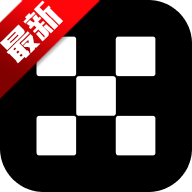PolkaWorld "Ask Me Anything" Recap
Last Thursday, PolkaWorld hosted its 5th online "Ask Me Anything" video livestream, where they answered questions from the community. They also compiled some of the common questions into a text version for easy reference.
To view past "Ask Me Anything" sessions:
- "Ask Me Anything 1: When will Kusama auctions begin? Why do my DOT transfers always fail?"
- "Ask Me Anything 2: Parallel chain teams can lease Kusama slots for up to 48 weeks"
1. Do all Polkadot projects need to auction for 2 slots?
PolkaWorld: It depends on the project's needs. In the Polkadot ecosystem:
- If a project only operates on one network, they can choose to only auction for a Kusama parallel chain slot (e.g., KILT) or only auction for a Polkadot slot. Alternatively, they can auction for a Kusama slot first and then switch to Polkadot (e.g., Bifrost).
- If a project operates on two networks, a canary network and a mainnet, they will run two parallel chains simultaneously on Kusama and Polkadot. Examples of such projects are Acala and Plasm.
- Some projects have three networks: an independent chain network, a canary network on Kusama, and a mainnet on Polkadot. Examples include ChainX. These projects will auction for two slots, one on Kusama and one on Polkadot, while using the independent chain for standalone operations.
It's important to note that the purpose of the auction is to access the security of the Kusama or Polkadot relay chains. Winning an auction for a Kusama slot does not automatically move the project to a Polkadot slot. Kusama and Polkadot are independent chains, and participation depends on which chain a project wants to connect to. You can first win an auction for a Kusama parallel chain and then auction for a Polkadot parallel chain, but it's incorrect to assume that winning a Kusama slot allows you to move to a Polkadot slot.
2. Does staking and slot locking KSM/DOT cause deflation in the secondary market? Will this increase DOT prices?
PolkaWorld: The ideal allocation ratio in Polkadot's token design is Staking:Slot Auction:Circulation = 50%:33%:17%. This ratio optimizes the rewards for validators and nominators when the staking rate is at 50%. Any rate above or below 50% would lead to reduced rewards. Therefore, the staking rate tends to gradually approach 50%. For those who want to maximize value, they may choose to lock their tokens in parallel chains, but this doesn't necessarily guarantee maximum value because you have to balance staking rewards and slot locking rewards. Projects participating in parallel chain auctions usually offer their tokens as incentives to encourage token locking. Ideally, this is a deflationary process, and deflation generally leads to increased value according to economics. I'm also excited to see what the market will look like in the end!
From another perspective, before the existence of parallel chains, Polkadot was just Polkadot – a meta-protocol with infrastructure. Its value was solely based on Polkadot itself. However, with the introduction of parallel chains, it marked the beginning of the Polkadot ecosystem and value capture. The majority of value will likely come from the incremental market of Polkadot's DeFi ecosystem.
3. What impact does slot auctions have on the development of the Polkadot ecosystem?
PolkaWorld:
As mentioned before, slot auctions truly open up the development of the Polkadot ecosystem and enable value capture.Secondly, the auctions enable the community, market, and capital to identify promising ecological projects from the start, thereby establishing a healthy Polkadot ecosystem.Following the auctions, we will enter the era of interoperable multichains, and we can all look forward to the surprises that come with it!4. There are differing opinions about Polkadot in the market. Some believe it is the next Ethereum, while others think it is the next EOS due to slot auctions. What is Polkadot's role?
PolkaWorld: We've discussed this question many times before... In summary, Ethereum and EOS are single-chain smart contract systems, while Polkadot is a scalable heterogeneous multi-chain system. Unlike existing Layer 1 blockchains focused on different functionalities (e.g., Bitcoin for peer-to-peer transactions, Ethereum and EOS for smart contracts, Filecoin for storage), Polkadot is a Layer 0 meta-protocol that doesn't provide any intrinsic functionality but only offers security. Polkadot's role is to provide security for these specific single chains, allowing them to focus on their functionality and benefit from cost savings in development and security maintenance. Additionally, the Substrate technology framework enables customization, and interoperability is facilitated by the Polkadot ecosystem. Therefore, Polkadot's role is to provide security for Layer 1.
本站所有软件信息均由用户上传发布,版权归原著所有。如有侵权/违规内容,敬请来信告知邮箱:764327034@qq.com,我们将及时撤销! 转载请注明出处:https://czxurui.com/zx/33825.html


 微信扫一扫
微信扫一扫  支付宝扫一扫
支付宝扫一扫
发表回复
评论列表(0条)